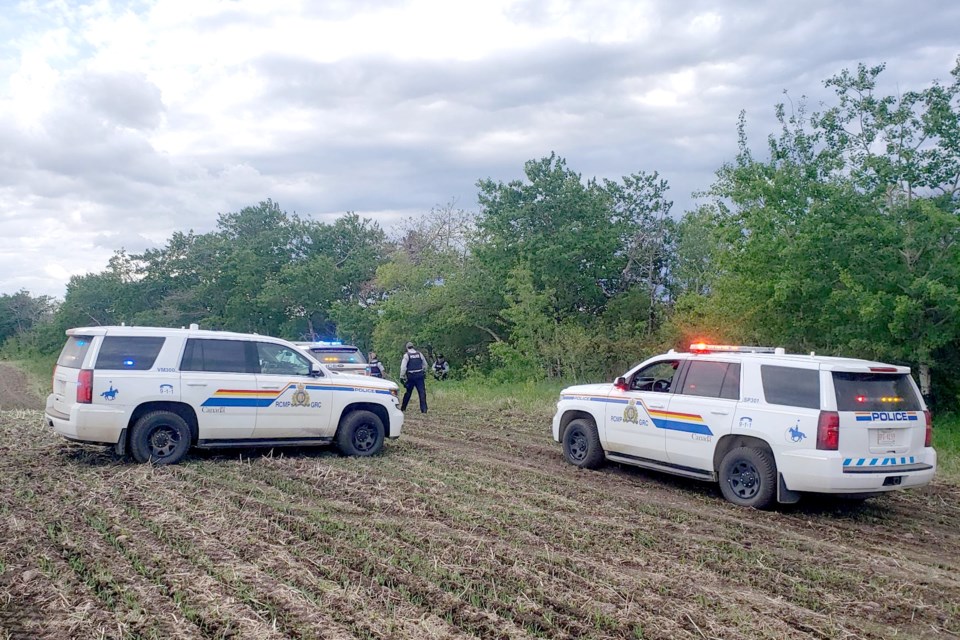Over the past few years, funding for the RCMP has remained flat, while demand pressures have continued to increase by 20 per cent for emergency and non-emergency calls since 2017. But law enforcement is rapidly changing. Enhanced technologies, new forms of crime, and new threats are shifting how policing is conducted. To carry out their duties safely and effectively, RCMP members need the right tools, equipment, training, and supports.
The National Police Federation (NPF) has been calling on all levels of government to increase resources for the RCMP to ensure stable funding to deliver effective and essential services to all Albertans, and all Canadians. The NPF represents about 20,000 RCMP members across Canada and is the national bargaining agent for RCMP Members below the rank of Inspector and reservists.
Despite increasing pressure and flat funding, the Alberta RCMP have worked hard to decrease crime across the province. In 2018 the Government of Alberta and the RCMP created a focused Rural Crime Reduction Strategy, which included more resources for the RCMP. The data shows that the resulting initiatives are highly effective in decreasing rural crime.
Recognizing that rural property crime was a leading concern for Albertans, the RCMP has strongly focused on its intelligence-led Crime Reduction Strategy, which uses an approach targeting repeat offenders, crime trends, and prevention initiatives. The Crime Reduction Strategy incudes many initiatives that dedicate appropriate RCMP resources to Alberta’s most vulnerable communities, deploys teams of officers, analysts, and civilians to stop repeat offenders in specific high crime communities, and support rural properties under the most duress.
The results of the Crime Reduction Strategy have been impressive. In March 2019 to April 2020, the rural properties identified as having the highest rates of repeat crime experienced a 55.4 per cent drop in incidents thanks to Project Lock Up alone. Overall, through the combined efforts of the initiatives, communities across the province saw a 17 per cent drop in break and enters and a 19 per cent drop in motor vehicle theft (from January to December 2020, compared to January to December 2019).
But that’s not all. Cases of theft under $5,000 dropped by a whopping 22 per cent. That is, 7,852 fewer cases in 2020 over 2019. Property crime offenses dropped significantly by 14,230, as did serious criminal code offenses, by 21,285.
“When governments and the RCMP work together on local issues and resources, such as hiring more officers as was the case for the Crime Reduction Strategy, it creates a measurable improvement,” says Brian Sauvé, President of the National Police Federation. “It all goes back to resources. The measures already in place were just a steppingstone. More investment is needed to address resources issues. Oftentimes Members are serving massive areas. For example, it can be a three-hour drive to respond to an emergency incident. Response times decrease with added resources.”
“Now, instead of adding more resources to the RCMP, the provincial government is looking at transitioning away from the RCMP to a new expensive provincial police force,” said Sauvé.
Based on the issues driving this decision and similar reviews elsewhere in Canada, the NPF has evidence showing a provincial model is neither necessary, nor would it ultimately be in Albertan’s best interest.
Currently the federal government pays around 30 per cent of Alberta’s RCMP costs. If shifted to a provincial model, taxpayers would bear the full financial burden of lost federal contributions, which works out to ~$160 million annually. Data from Surrey, B.C., which proposed to transition from an RCMP model to a municipal detachment, show their transition costs are far more than estimated; costs there tripled to $64 million. And that is the cost for a city, not for an entire province. A similar strategy was looked at for Red Deer, but then scrapped when KPMG released a study showing not only tens of millions in additional costs to taxpayers, but also a four-year transition time. Again, that was for a city, not a province. The impact to Albertans would be far greater.
“One of the issues driving this proposed change is the notion that rural crime can be fixed with a better community model, but what’s needed is more resources. Improvements from the rural Crime Reduction Strategy makes that clear,” said Sauvé.
Both the NPF and the RCMP are invested in improving service, from rural crime reduction to increasing confidence among vulnerable communities. However, this will not be possible if the province were to implement a provincial police service.
The numbers from the Crime Reduction Strategy alone prove this, and there are more programs in the works to address Albertan’s policing needs across the board. A shift away from these efforts now, to a costly new police force that would take years to implement, is not in Alberta’s best interest. Both the provincial RCMP and the NPF know that improvements need to be made, especially among marginalized and remote communities, but the data strongly indicates that a provincial police force is not the best path forward.
The NPF is calling on all governments, including Alberta and the next federal government, to provide the RCMP with the human and financial resources they need to continue to reduce crime and keep all Albertans safe. The Alberta RCMP is Alberta’s provincial police service. You can learn more at https://election.npf-fpn.com/ and http://www.keepalbertarcmp.ca.
Authorized by the National Police Federation | [email protected] | 306-802-2733
 The National Police Federation represents ~20,000 RCMP Members across Canada and is focused on improving Member and public safety in the communities we serve, large and small, across Canada.
The National Police Federation represents ~20,000 RCMP Members across Canada and is focused on improving Member and public safety in the communities we serve, large and small, across Canada.



